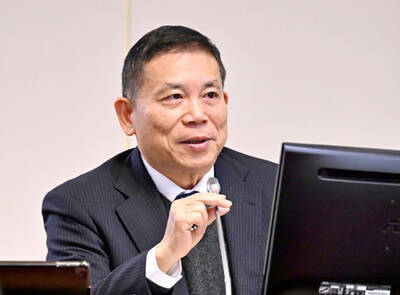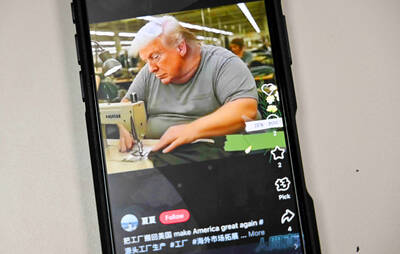Iron ore’s most spectacular collapse on record portends more volatility to come as investors grapple with a complex policy backdrop in China and an uneven recovery in global demand.
Once one of the hottest commodities in this year’s raw-material boom, iron ore’s ructions swiftly made it one of the most volatile. A brutal five-week rout for futures, and a 14 percent slump in the spot market on Thursday, has seen it lose about 40 percent of its value since May’s record as China seeks to reduce steel production to curb pollution.
Attention is now turning to an uncertain outlook for consumption, raising the prospect of more sharp, short-term moves. China’s demand is showing signs of faltering, although expectations are building that authorities might turn to infrastructure to help prop up the economy. Rising COVID-19 cases are weighing on growth in many parts of the world.
Benchmark spot ore with 62 percent iron content plunged 14 percent on Thursday, its biggest loss ever. Futures in Singapore on Friday rose 5.9 percent to US$138.30 a tonne following Thursday’s 12 percent slump, but remain near the lowest since December last year.
“We are massively bullish from these levels given the anticipated steel demand recovery once China overcomes the current COVID outbreak,” said Navigate Commodities managing director Atilla Widnell said. “We see strong support for iron ore at US$140 a ton and it actually looks incredibly oversold.”
The market is being buffeted by sometimes conflicting policies in China. Officials had turned to stimulus to boost growth, fueling demand for commodities key to infrastructure and property. At the same time, they sought to cut steel output and expectations for a flurry of restrictions saw mills front-load production to the first half of the year.
That saw a swift run-up to a record for iron ore and steel, with the resulting inflationary pressures leading to a crackdown on commodities speculation, tighter credit and a moderation in spending on construction.
Market watchers are now trying to gauge the extent to which that lower consumption is reflected in prices.
Morgan Stanley said iron ore could fall further due to China’s weak steel demand, while Kallanish Commodities Ltd analyst Tomas Gutierrez said iron ore is close to a bottom and a weak second half is priced in.
Still, faltering growth might underpin iron ore demand beyond this half if measures are needed to prop up the economy. China slowed more than expected last month as COVID-19 outbreaks added new risks to the recovery and boosted optimism the nation might turn to more monetary and fiscal stimulus to prevent a sharper slowdown.
“Steel demand will weaken in the second half along with a slowing property sector, but there is unlikely to be a big-sized drop, as the country has pledged to boost infrastructure investment to offset potential economic risks,” said Xu Xiangchun (徐向春), who has been in the industry for more than 30 years and is chief information officer at researcher Mysteel Global.
There is also long-term supply constraints that are likely to underpin iron ore. Vale SA has been trying to recover output since a dam disaster more than two years ago, while Australian giant Rio Tinto Group has said it is struggling to keep up with demand.
“Prices have now declined to a sustainable level,” Wood Mackenzie head of iron ore research Rohan Kendall said. “The iron ore market remains susceptible to supply disruptions and short-term spikes in the iron ore price are likely.”
Other commodities:
‧Gold for December delivery on Friday fell US$1.30 to US$1,783.10 an ounce, up 1.8 percent for the week.
‧Silver for September delivery on Friday fell US$0.19 to US$23.23 an ounce, up 0.5 percent weekly, and September copper fell US$0.08 to US$4.04 a pound, down 7.3 percent for the week.
Additional reporting by AP, with staff writer

UNCERTAINTY: Innolux activated a stringent supply chain management mechanism, as it did during the COVID-19 pandemic, to ensure optimal inventory levels for customers Flat-panel display makers AUO Corp (友達) and Innolux Corp (群創) yesterday said that about 12 to 20 percent of their display business is at risk of potential US tariffs and that they would relocate production or shipment destinations to mitigate the levies’ effects. US tariffs would have a direct impact of US$200 million on AUO’s revenue, company chairman Paul Peng (彭雙浪) told reporters on the sidelines of the Touch Taiwan trade show in Taipei yesterday. That would make up about 12 percent of the company’s overall revenue. To cope with the tariff uncertainty, AUO plans to allocate its production to manufacturing facilities in

Taiwan will prioritize the development of silicon photonics by taking advantage of its strength in the semiconductor industry to build another shield to protect the local economy, National Development Council (NDC) Minister Paul Liu (劉鏡清) said yesterday. Speaking at a meeting of the legislature’s Economics Committee, Liu said Taiwan already has the artificial intelligence (AI) industry as a shield, after the semiconductor industry, to safeguard the country, and is looking at new unique fields to build more economic shields. While Taiwan will further strengthen its existing shields, over the longer term, the country is determined to focus on such potential segments as

COLLABORATION: Given Taiwan’s key position in global supply chains, the US firm is discussing strategies with local partners and clients to deal with global uncertainties Advanced Micro Devices Inc (AMD) yesterday said it is meeting with local ecosystem partners, including Taiwan Semiconductor Manufacturing Co (TSMC, 台積電), to discuss strategies, including long-term manufacturing, to navigate uncertainties such as US tariffs, as Taiwan occupies an important position in global supply chains. AMD chief executive officer Lisa Su (蘇姿丰) told reporters that Taiwan is an important part of the chip designer’s ecosystem and she is discussing with partners and customers in Taiwan to forge strong collaborations on different areas during this critical period. AMD has just become the first artificial-intelligence (AI) server chip customer of TSMC to utilize its advanced

While China’s leaders use their economic and political might to fight US President Donald Trump’s trade war “to the end,” its army of social media soldiers are embarking on a more humorous campaign online. Trump’s tariff blitz has seen Washington and Beijing impose eye-watering duties on imports from the other, fanning a standoff between the economic superpowers that has sparked global recession fears and sent markets into a tailspin. Trump says his policy is a response to years of being “ripped off” by other countries and aims to bring manufacturing to the US, forcing companies to employ US workers. However, China’s online warriors